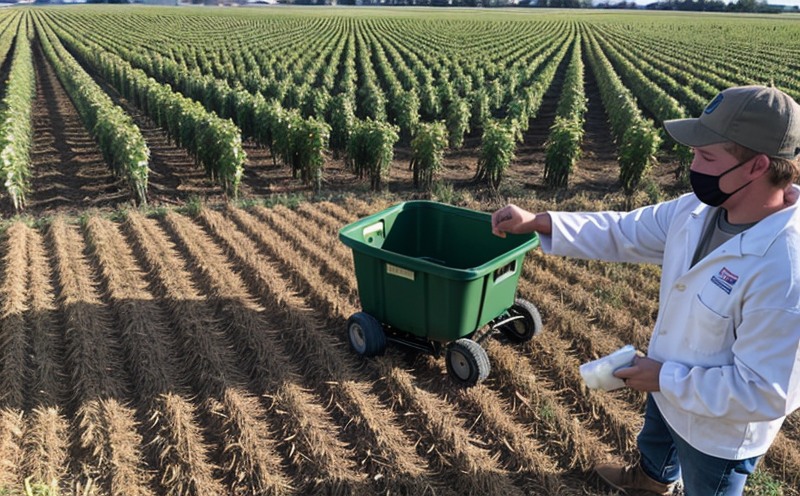Fiber Content Testing in Post-Harvest Produce
Post-harvest quality testing is a critical component of ensuring food safety and product quality throughout the supply chain. Fiber content plays a vital role in determining the nutritional value, texture, and overall palatability of produce. In agriculture and forestry, understanding fiber content is essential for optimizing production processes, maintaining high-quality standards, and meeting consumer expectations.
Fiber content testing involves analyzing the amount of dietary fiber present in different types of post-harvest produce such as fruits, vegetables, grains, and seeds. This service helps ensure that products meet specific nutritional requirements and comply with international standards like ISO 6865:2014 for cereal grains or EN 1973-2:2013 for fruit juices.
The testing process typically begins with proper specimen preparation. Depending on the type of produce being tested, this may involve slicing samples into uniform pieces or grinding them to a consistent particle size. Once prepared, the specimens undergo extraction methods tailored to dissolve cellulose and hemicellulose while preserving other components.
Instrumentation used for fiber content testing includes specialized analytical balances capable of measuring small masses accurately down to milligrams, moisture ovens to dry samples uniformly before analysis, and near-infrared spectroscopy (NIRS) devices which can quickly assess total dietary fiber levels based on light absorption patterns. NIRS offers non-destructive evaluation capabilities making it particularly useful for large volume analyses or rapid screening.
After extraction and drying steps have been completed, the sample is weighed again to determine its moisture content. Subtracting this value from the initial mass provides a measure of dry matter which serves as an important baseline when calculating fiber percentages. Various chemical assays then quantify specific types of dietary fibers including soluble (e.g., pectin) and insoluble (cellulose).
Reporting results involves presenting raw data alongside calculated metrics such as total dietary fiber, soluble vs. insoluble fractions, and any other relevant components found during analysis. Compliance officers can use these findings to adjust production processes or implement quality control measures aimed at maintaining consistent fiber content across batches.
- Quality and Reliability Assurance: Our laboratory adheres strictly to international standards ensuring accurate measurements and reliable results every time.
- Competitive Advantage and Market Impact: By providing precise fiber content data, our clients gain a competitive edge in the marketplace. This knowledge allows them to differentiate their products based on nutritional value which is becoming increasingly important as consumer awareness grows.





